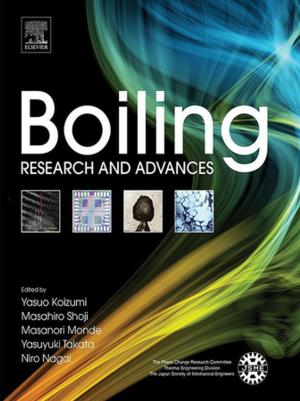Handbook of Immunohistochemistry and in Situ Hybridization of Human Carcinomas
Molecular Genetics; Lung and Breast Carcinomas
Nonfiction, Health & Well Being, Medical, Medical Science, Immunology, Science & Nature, Science, Other Sciences, Molecular Biology| Author: | ISBN: | 9780080495194 | |
| Publisher: | Elsevier Science | Publication: | June 16, 2004 |
| Imprint: | Academic Press | Language: | English |
| Author: | |
| ISBN: | 9780080495194 |
| Publisher: | Elsevier Science |
| Publication: | June 16, 2004 |
| Imprint: | Academic Press |
| Language: | English |
The various cell types have traditionally been recognized and classified according to their appearance in the light microscope following the process of fixing, processing, sectioning, and staining tissues that is known as histology. Classical histology has been augmented by immunohistochemistry (the use of specific antibodies to stain particular molecular species in situ). Immunohistochemistry has allowed the identification of many more cell types than could be visualized by classical histology, particularly in the immune system and among the scattered hormone-secreting cells of the endocrine system.
Handbook of Immunohistochemistry and in Situ Hybridization of Human Carcinomas discusses all aspects of immunohistochemistry and in situ hybridization technologies and the important role they play in reaching a cancer diagnosis. It provides step-by-step instructions on the methods of additional molecular technologies such as DNA microarrays, and microdissection, along with the benefits and limitations of each method. The topics of region-specific gene expression, its role in cancer development and the techniques that assist in the understanding of the molecular basis of disease are relevant and necessary in science today, ensuring a wide audience for this book.
- The only book available that translates molecular genetics into cancer diagnosis
- Provides the readers with tools necessary to perform and optimize sensitive, powerful techniques, including immunohistochemistry and fluorescence in situ hybridization, used in tumor diagnosis
- Written by experts in this field, the book provides theoretical considerations as well as practical approaches to carry out effectively these techniques
- Offers suggestions, tips, cautions, and guidelines to avoid artifacts and misdiagnosis
- Introduces new techniques to detect genes and proteins involved in the initiation and progression of cancer
- Covers the latest developments and a wide range of applications to the detection of antigens and single-copy DNA and RNA
- Written in a uniform format, each chapter includes Introduction, Materials required, step-by-step detailed Methods, Results, Discussion, and comprehensive up-to-date References
The various cell types have traditionally been recognized and classified according to their appearance in the light microscope following the process of fixing, processing, sectioning, and staining tissues that is known as histology. Classical histology has been augmented by immunohistochemistry (the use of specific antibodies to stain particular molecular species in situ). Immunohistochemistry has allowed the identification of many more cell types than could be visualized by classical histology, particularly in the immune system and among the scattered hormone-secreting cells of the endocrine system.
Handbook of Immunohistochemistry and in Situ Hybridization of Human Carcinomas discusses all aspects of immunohistochemistry and in situ hybridization technologies and the important role they play in reaching a cancer diagnosis. It provides step-by-step instructions on the methods of additional molecular technologies such as DNA microarrays, and microdissection, along with the benefits and limitations of each method. The topics of region-specific gene expression, its role in cancer development and the techniques that assist in the understanding of the molecular basis of disease are relevant and necessary in science today, ensuring a wide audience for this book.
- The only book available that translates molecular genetics into cancer diagnosis
- Provides the readers with tools necessary to perform and optimize sensitive, powerful techniques, including immunohistochemistry and fluorescence in situ hybridization, used in tumor diagnosis
- Written by experts in this field, the book provides theoretical considerations as well as practical approaches to carry out effectively these techniques
- Offers suggestions, tips, cautions, and guidelines to avoid artifacts and misdiagnosis
- Introduces new techniques to detect genes and proteins involved in the initiation and progression of cancer
- Covers the latest developments and a wide range of applications to the detection of antigens and single-copy DNA and RNA
- Written in a uniform format, each chapter includes Introduction, Materials required, step-by-step detailed Methods, Results, Discussion, and comprehensive up-to-date References















